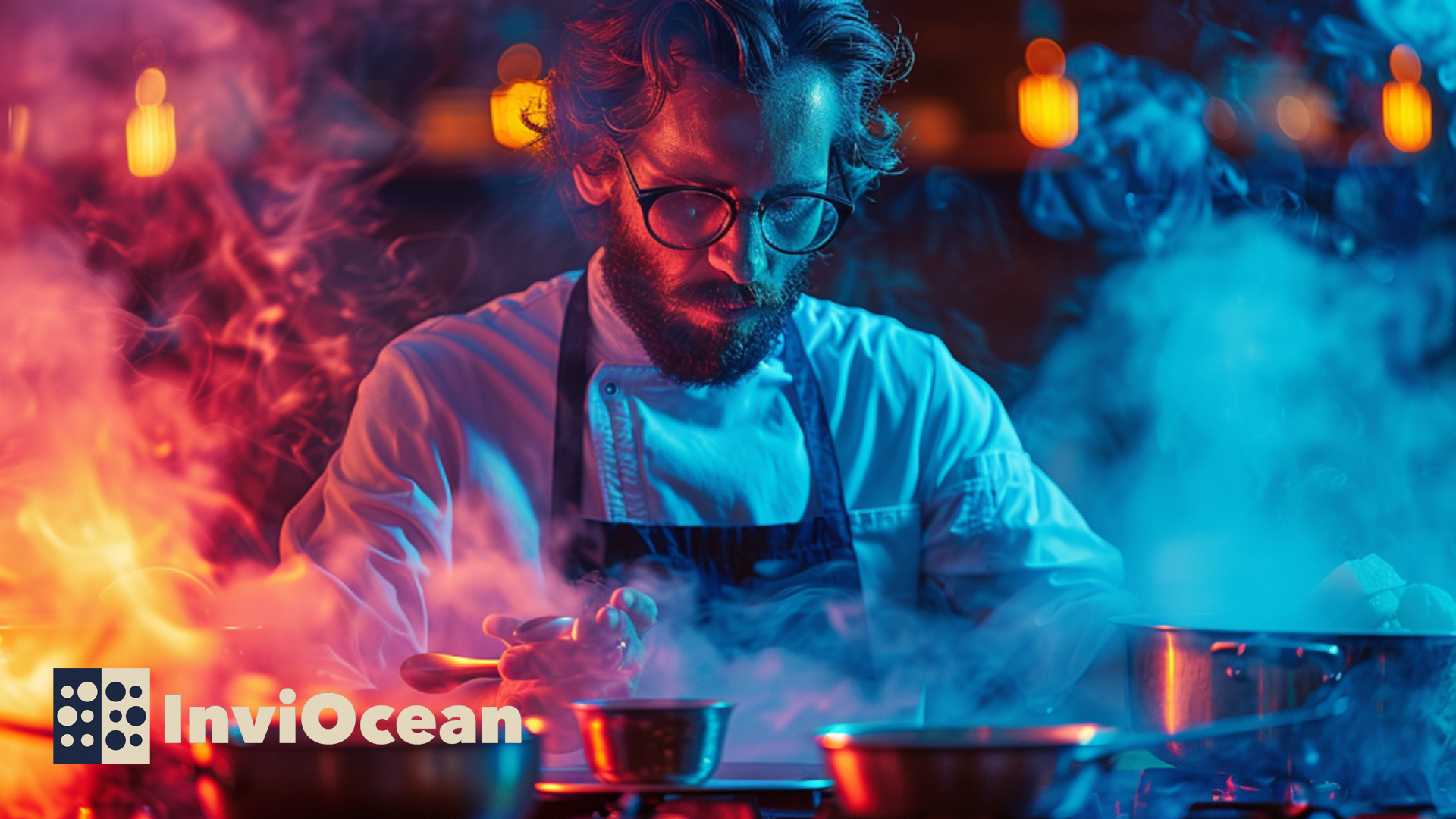How Do Blind People Use Computers? Tips and Tricks
Can blind people cook? Cooking for the blind is not just a practical task; it is an art form, where the blind cook becomes the maestro orchestrating a symphony of flavors and textures. In this article, you will find tips for those who want to cook being visually impaired. Nowadays there are a lot of specially designed appliances and practical tips for the blind to cook independently and confidently. This article sheds light on the adaptive measures, tools, and techniques that make the culinary world accessible to the visually impaired.
Kitchen Preparation
A well-organized kitchen brings joy to cooking even if you are blind. Choose a designated spot for each item, ensuring easy retrieval and timely replenishment. Keep spices on one shelf, oils on another, and so forth. Group similar items together, placing them within arm’s reach of your cooking area. Enhance accessibility by utilizing braille labels for spices and other essentials.
Measuring cups are invaluable in blind cooking, as they serve multiple functions. Use them to scoop out various ingredients, minimizing the risk of spills when transferring food to dishes or bowls. For liquids frequently measured in small amounts, such as vanilla extract, store them in wide-mouth containers. This way there is no need to pour these liquids into a small spoon; instead, you can insert the measuring spoon directly into the container.

Cutting and Chopping
- Contrasting Surfaces: Use trays or cutting boards that contrast with your food. For example, use a white cutting board for slicing apples or carrots. And a dark-colored board will be suitable for bread.
- Reversible Convenience: Invest in a reversible cutting board, featuring a dark side and a white side. Use white surface with darker-colored foods like eggplant or broccoli, and switch to the black side for lighter-colored items such as onions and cheese.
- Knife Positioning: Make sure the cutting edge of your knife blade is directed downward before starting to cut or slice. Identify the cutting edge without physical contact by noting its curved nature. Rock the knife blade gently forward and backward on the table to discern when the cutting edge, which will rock, is facing downward.
- Pizza Cutter Versatility: Consider using a pizza cutter as an alternative to a knife when slicing sandwiches, adding a touch of efficiency to your culinary endeavors.
Tips for Pouring, Draining, and Mixing
- Minimizing Mess: Place a tray or cookie sheet with raised edges under the bowl when pouring and mixing. You will reduce mess and prevent loss from spillage. This method is especially good for carrying items that are easy to spill, such as small desserts or custards. Keep them together on one tray in the oven or refrigerator.
- Strategic Preparation: Measure ingredients directly beside the mixing bowl and prepare items like gelatin near the refrigerator. Consider placing a piecrust on the oven shelf before pouring in the liquid filling to further minimize potential spills.
- Specialized Tools: Invest in an “Oven Saver,” a round metal sheet with crimped edges and a hole in the middle for heat circulation. It can prevent spillage problems with pies both inside and outside the oven. This item is readily available in a lot of shops
- Pouring Techniques: Practice pouring from one container to another using regular methods, keeping one hand on the receiving container to track its location. With experience, judging container fullness by sound and weight becomes relatively easy.
- Mixing Innovations: Utilize a screw-top jar or shaker for efficient mixing of flour with liquid, particularly useful in making white sauce and gravies. For thick mixtures like cake batter, ensure an even level across the pan.
- Egg Separation Methods: Experiment with various methods for separating eggs, such as breaking the shell into two unequal parts and draining off the white. Alternatively, consider investing in a specialized tool designed for separating eggs.
- Stirring by Hand: Stirring by hand is generally straightforward. Use a sufficiently large bowl to minimize splashing and scrape the sides as needed. If the bowl tends to slide, place it on a non-slippery surface like a damp cloth.
Using ovens, pans and stoves
When dealing with stovetops or electric frying pans, a safety-conscious approach is crucial, especially for beginners. Placing food in a pan before turning on the heat allows for tactile examination of both the pan and burner, ensuring safety. While experience reduces the need to turn off the heat, thorough familiarity with the arrangement becomes essential for confident cooking.
For conventional ovens, beginners may prefer examining it while cold, ensuring a clear understanding of its layout. Using mitts or potholders when the oven is hot becomes second nature with practice. Pulling out the oven shelf minimizes the risk of burns, and proper attachment ensures stability.
Lighting a gas stove or oven need not be intimidating for the blind cook. Relying on senses other than sight, such as listening for the flame or feeling the heat, ensures safe operation. With experience, adjusting the flame becomes intuitive by observing the control position and heat generated. Matches, whether large wooden ones or any available, serve the purpose, and with practice, lighting becomes routine.
Determining boiling points or monitoring confections relies on listening, feeling vibrations, or using Braille thermometers for thicker liquids. Checking meat doneness, turning, and flipping become natural processes by touch, aided by spatulas and paper toweling pads if needed.
Frying chicken or bacon follows strategic methods to simplify handling. For pancakes and waffles, pouring batter and judging doneness rely on experienced techniques. Egg rings provide assistance when frying eggs, ensuring a perfect shape.
Ultimately, the blind cook navigates the cooking process using time, touch, odor, taste, and sound to determine when a dish is perfectly done.

Using Kitchen appliances for Blind
- Tactile Timers: Tactile timers with marked dials provide a tangible solution for setting precise cooking times. By feeling the markings, individuals can easily set the timer without relying on visual cues.
- Talking Lids: Talking lids serve as helpful organizers, allowing users to record voice prompts about the contents of jars, containers, or bags. This assists in identifying stored items with ease.
- Liquid Level Indicator: A liquid level indicator, when hung on the edge of a cup, audibly notifies the user when the liquid reaches the top, preventing spills and offering a practical solution for pouring beverages.
- Non-Slip Kitchen Tools: Everyday kitchen tools like non-slip cups, cutting boards, and mats provide stability and safety for visually impaired individuals, minimizing the risk of accidents during food preparation.
- Automatic Can Openers: Automatic can openers simplify the process of opening cans, ensuring ease of use with minimal effort. These gadgets contribute to a smoother cooking experience.
- Dispenser Knives and Egg Cracking Tongs: Gadgets like dispenser knives help in cutting food into equal portions, while egg cracking tongs assist in separating yolks from whites and peeling hard-boiled eggs.
- Adaptive Kitchen Scales and Bezmen: Kitchen scales with speech output and bezmen devices provide audible information, making it easier for individuals to measure ingredients accurately and participate in complex cooking processes.
- Voice-Guided Multicookers: Modern multicookers equipped with voice guides offer a hands-free cooking experience. These devices can voice settings, making it possible to prepare a variety of dishes, from soups and porridge to yogurt and bread
Certainly, not all individuals with visual impairments opt for specialized kitchen gadgets. When cooking, one can utilize standard tools like thermometers, probes, tongs, oven mitts, and more. Essential tools for cooking include skillets, pots, and ovens, without the need for intricate adaptations. The complexity of dishes remains consistent for both sighted and visually impaired individuals. Whether baking chicken in the oven or preparing it with a sauce, the process is straightforward.
However, certain considerations come into play during the cooking process. Some visually impaired individuals might be cautious about using gas or electric stoves due to burn risks. It’s essential to acknowledge that while there’s always some level of risk, consistent engagement helps develop automated actions, such as proper hand placement during cutting and using oven mitts while stirring.
For a comfortable kitchen experience, a degree of self-organization and focus is required. Arranging ingredients systematically in front of you and following specific cooking stages facilitates the assembly of the final dish. Learning to cook is best accomplished by observing and following practical demonstrations, emphasizing that practical experience is crucial. Joining culinary studios imparts theoretical knowledge and provides practical demonstrations, aiding individuals in understanding cooking techniques.
Video Guides
Exploring the culinary world has become more inclusive, thanks to the emergence of YouTube channels featuring blind cooks. These channels not only provide valuable cooking lessons but also offer a unique perspective on navigating the kitchen without relying on sight.
The Inclusive Culinary Hub
The Inclusive Culinary Hub aims to empower blind and vision-impaired chefs with practical cooking tools and insightful tips. Our content fosters a safe, independent, and confident cooking experience in the comfort of your kitchen. Visit The Inclusive Culinary Hub
Blind Chef Chronicles
Embark on a culinary journey with Blind Chef Chronicles, where a simple yet passionate blind chef shares his love for cooking. Despite facing challenges like the risk of burns and lacerations, he persists. Through heart-based color perception and aromatic guidance, discover a second chance at achieving greatness in life through cooking. Take command of your life, and subscribe to support the blind chef’s inspiring journey. Explore Blind Chef Chronicles
Christine Ha’s Culinary World
Christine Ha, the pioneering blind winner of MasterChef Season 3, invites you to her culinary world. Beyond her New York Times best-selling cookbook and co-hosting duties on Four Senses, Christine and her husband, John, curate engaging content on this YouTube channel. Join her loyal fanbase and witness the extraordinary culinary adventures. Christine Ha’s Culinary World
Cooking Without Looking Insights
Dive into the world of Cooking Without Looking for unique insights and cooking experiences. This channel, driven by the spirit of inclusivity, shares valuable perspectives on cooking without relying on sight. Subscribe to Cooking Without Looking
The Low Vision Culinary Guide
Goldie Shaw, the culinary enthusiast behind The Low Vision Chef, brings you cooking shows enriched with techniques and tools tailored for easy preparation. Bid farewell to takeout and convenience foods as you learn to create delicious meals with ease. Join The Low Vision Culinary Guide
The world of blind cooking unveils the extraordinary capabilities of individuals overcoming visual challenges. Through the lens of the blind cook, we witness the triumph of determination in the kitchen. Whether a person cooking relies on specialized tools or discovers innovative techniques, the journey is a testament to resilience. Easy meals for the visually impaired become a gateway to culinary delight, proving that the joy of cooking knows no visual boundaries. So, let the stories of blind cooking be an inspiration for all, emphasizing that, with adaptability and creativity, anyone can savor the art of preparing a delicious meal, regardless of sight.
To ensure safety while cooking over the stove, consider these tips: Always place the pan on the burner before turning it on, and remember to turn the burner off before removing the pan. Opt for pans and pots equipped with heat-resistant handles to minimize the risk of burns.
Organization is key for blind cooks. They typically prepare ingredients beforehand, arranging them in the order of addition or necessity. When cooking meat, they rely on sound cues, noting changes in pitch as indicators of doneness.
Electric grills, available in indoor and outdoor models, offer controlled temperature settings and maintain a safe distance between the heating element and the cooking area. Consequently, they are among the easiest options for blind or visually impaired individuals.
